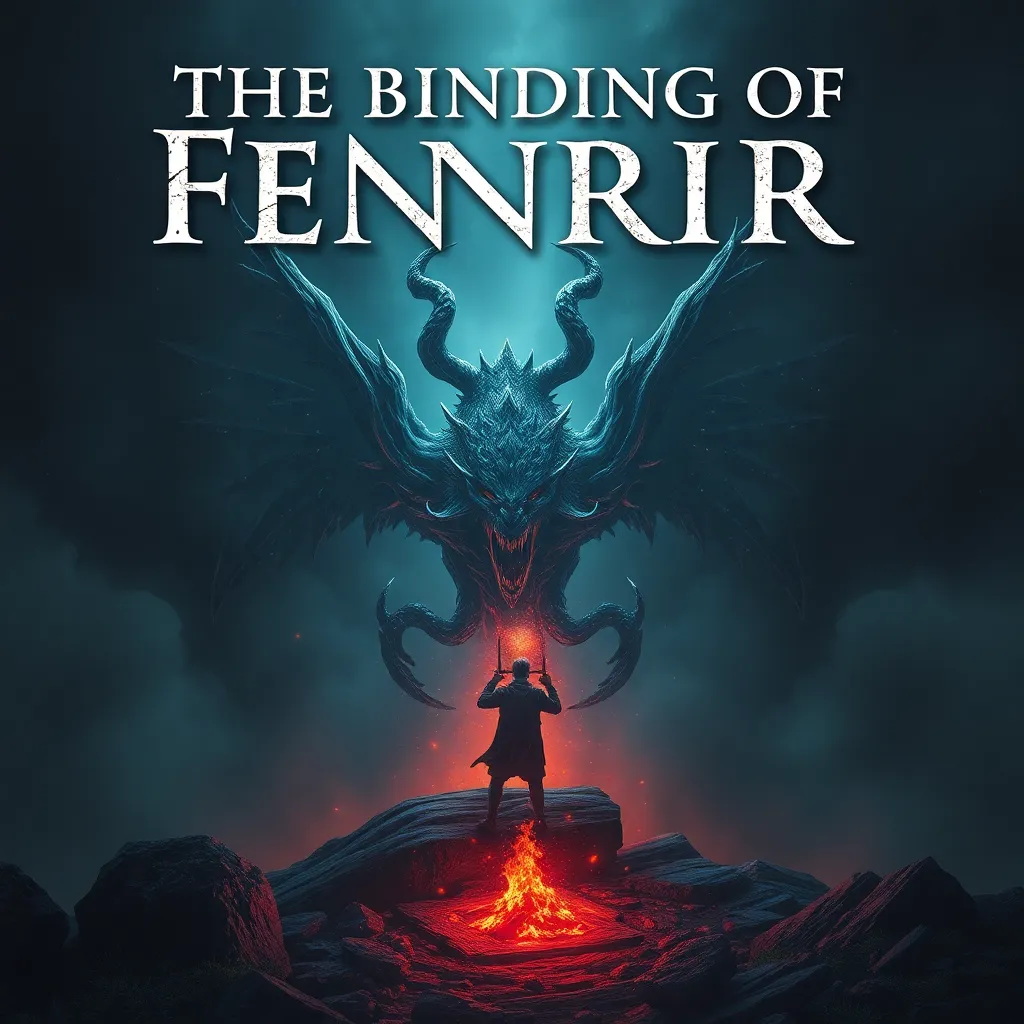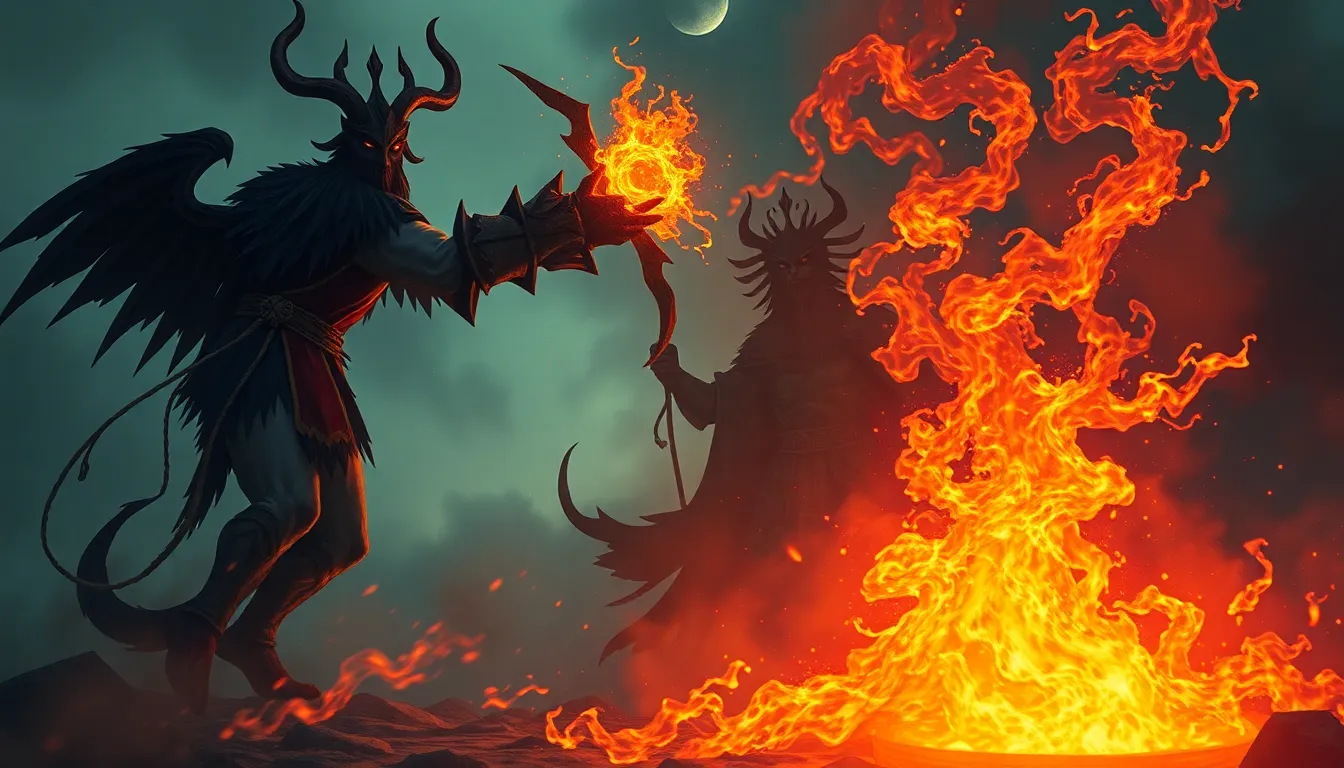The Binding of Fenrir: A Tale of Prophecy and Betrayal
Introduction: The Mythical Context of Fenrir
Norse mythology is a rich tapestry of gods, giants, and creatures, each with their own stories that intertwine to reveal the complexities of fate, power, and morality. Among these figures stands Fenrir, the monstrous wolf destined to play a pivotal role in the events of Ragnarok, the end of the world in Norse lore. Fenrir’s tale is laden with themes of prophecy and betrayal, showcasing the delicate balance between love and fear, trust and treachery, that characterizes many mythological narratives.
The Prophecy of Fenrir’s Rise
From the moment of his birth, Fenrir was steeped in prophecy. According to the Norns, the three fates of Norse mythology, Fenrir was foretold to cause great chaos and destruction, a harbinger of doom for the gods of Asgard. The prophecy hinted at a future where this fearsome wolf would break free from his bonds, unleashing havoc upon the world.
- The foretelling of Fenrir’s rise was a source of dread among the Aesir gods.
- They were warned that he would slay Odin, the Allfather, during Ragnarok.
- The gods’ reactions ranged from fear to attempts to control his fate through binding.
The Bonds of Fate: Fenrir’s Early Years
Despite the foreboding prophecy, Fenrir was raised among the Aesir, who initially sought to foster him as a companion. His early years were marked by a duality; the gods felt a mix of love and fear towards him. As Fenrir grew, so did his strength, prompting significant concern among the gods.
- His playful interactions with the gods turned to apprehension as he matured.
- Key events included his participation in games and challenges that showcased his immense power.
- These moments led to the gods’ decision to find a way to bind him before it was too late.
The Creation of the Binding: Gleipnir
Realizing that Fenrir’s strength posed an existential threat, the gods embarked on a quest to bind him. They sought the help of the dwarves, master craftsmen renowned for their ability to create wondrous objects. The result of this collaboration was Gleipnir, a seemingly delicate ribbon forged from six mystical ingredients, including the sound of a cat’s footfall and the breath of a fish.
Gleipnir symbolized deception and control, as it appeared fragile yet was unbreakable. This duality mirrored the gods’ approach to Fenrir: they sought to manage the threat he posed while masking their true intentions.
The Betrayal of Trust: The Binding Ceremony
The moment of Fenrir’s binding was both dramatic and poignant. The gods invited Fenrir to test his strength against various bindings, ultimately proposing Gleipnir as a challenge. Fenrir, wary of the gods’ intentions, demanded that one of them place their hand in his mouth as a pledge of trust. Tyr, the god of war and law, bravely stepped forward to fulfill this request, knowing the risk involved.
As Fenrir found himself ensnared by Gleipnir and unable to break free, he realized the betrayal that had unfolded. Tyr lost his hand in the process, marking a significant sacrifice for the greater good.
Aftermath: The Consequences of Binding Fenrir
The binding of Fenrir had immediate and lasting consequences for the cosmos. The gods, relieved to have contained the threat, celebrated their victory. However, an undercurrent of unease persisted, knowing that the act of binding a creature fated to bring about their doom might not be without repercussions.
- With Fenrir bound, the gods felt a temporary sense of security.
- Yet the prophecy of Ragnarok loomed ever closer, casting a shadow over their triumph.
- This event raised questions about the nature of power and control in the face of fate.
Ragnarok: Fenrir’s Revenge
As foretold in the prophecies, the time of Ragnarok arrived, and Fenrir broke free from his bonds. His revenge was swift and brutal, fulfilling the dark prophecies that had been whispered at his birth. In the chaos of Ragnarok, Fenrir was destined to confront Odin, ultimately fulfilling his role as the harbinger of doom.
The events leading to this confrontation were steeped in betrayal. The gods, who had once sought to control Fenrir, now faced the consequences of their actions. The cycle of betrayal continued as Fenrir sought vengeance against those who had wronged him, embodying the theme of retribution that permeates many mythological tales.
Conclusion: Lessons from the Tale of Fenrir
The tale of Fenrir remains relevant in modern culture, serving as a reminder of the complexities of prophecy, betrayal, and the unpredictability of fate. Fenrir’s story teaches us about the dangers of attempting to control that which is inherently wild and untamable. Myths like Fenrir’s reflect fundamental truths about human nature, societal fears, and the eternal struggle between order and chaos.
As we navigate our own lives, the lessons embedded in Fenrir’s tale resonate: trust can be a double-edged sword, and actions taken in fear can lead to unintended consequences. The story of Fenrir serves as a powerful allegory for the cycles of betrayal and revenge that can echo throughout history and mythology.




